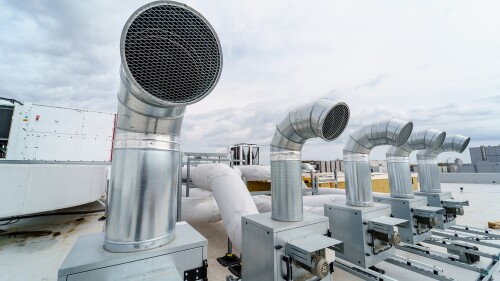This article is republished with permission from REITCafe.
Is increased construction good or bad for apartment real estate investment trusts (REITs)? This question took center stage last week with the release of May data on multifamily completions and permit activity by the U.S. Census Bureau and the U.S. Department of Housing and Urban Development.
The number of housing units completed in multifamily projects with more than five units was up 48.5 percent in May from a year earlier, and year-to-date growth in completions was up 21.7 percent. Multifamily permit activity, a measure of future construction, gained 53.9 percent from May 2014, and year-to-date growth was up 14.7 percent.
Increased building activity is the result of a healthy economy and strong apartment market fundamentals. Reis reported first-quarter 2015 U.S. apartment vacancy was 4.1 percent, down from 4.2 percent the previous quarter. Demand for apartments has stayed strong throughout the economic recovery, driven by job growth, millennials, and baby boomers. Low vacancy for existing units puts upward pressure on rents, which makes development feasible.
| TREPP-i Survey Loan Spreads (50–59% LTV)* |
| This Week | Previous Week | Previous Month | End 2014 | End 2013 | |
| Industrial | 150 | 151 | 153 | 138.5 | 170 |
| Multifamilty | 146 | 148 | 148 | 139.8 | 166.7 |
| Office | 152 | 155 | 155 | 148 | 175 |
| Retail | 152 | 151 | 154 | 139.8 | 175 |
| Average Spread | 150.00 | 151.25 | 152.5 | 141.5 | 171.7 |
| 10-year Treasury Yield** | 2.27 | 2.38 | 2.12 | 2.17 | 3.04 |
Construction activity also reflects the aggressive acquisitions environment that has pushed up property values. Investors are looking beyond primary markets and are acquiring assets in secondary and even tertiary markets, according to a recent report from Real Capital Analytics. At REIT Week 2015 in New York City, some REIT managers noted that because apartments have become expensive to buy, they achieve better returns on new development. Several apartment REITs are capitalizing on strong pricing by becoming active sellers.
Despite the significant development pipeline, REIT investors are currently less concerned about overbuilding than they were in 2013, when worries about oversupply drove total REIT returns down 6.2 percent for the year. Apartment REITs traded up 1.1 percent when news of construction growth was released June 16, because it highlights the strength of the market.
Apartments were one of the strongest sectors in 2014, with a 39.62 percent total return, and although 2015 returns have been substantially lower, totaling 2.80 percent so far in 2015, apartment REIT performance is outpacing other REIT sectors. Stock prices for four of the largest REITs—Equity Residential, AvalonBay Communities, Essex Property Trust, and UDR—have posted modest stock price gains of 1 to 9 percent so far this year.
The outlook for apartment REITs is solid, but includes some lingering construction-related uncertainty.
Current apartment market demand appears to be more sustainable than in previous upcycles; job growth and demographic trends are supporting rental demand; and high student loan debt loads are preventing millennials from buying homes and keeping them in the rental market longer. In addition, millennials and baby boomers increasingly choose to rent, especially in cities, to take advantage of an urban lifestyle. Higher interest rates are unlikely to derail the sector, because they make homeownership less affordable and drive people to the rental market.
Rental demand has so far been sufficient to absorb construction deliveries, but it is too soon to tell whether future deliveries will be quickly absorbed or if they will lead to oversupply, which could affect rent growth and REIT returns.
* TREPP-i Survey Loan Spreads levels are based on a survey of balance sheet lenders. For more information, visit Trepp.com.
** - 10 yr. Treasury Yield as of 6/19/2015.





